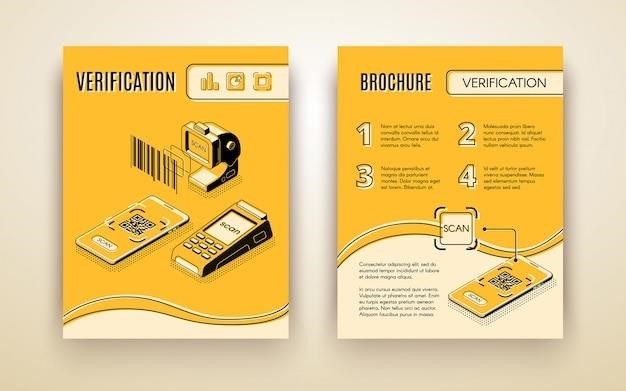Preaching is God’s chosen means of communicating the Gospel. It’s not simply a good idea, but a powerful tool for change. Homiletics, the art and science of preaching, equips disciples to proclaim the Gospel effectively.
Defining Homiletics: The Art and Science of Preaching
Homiletics is the discipline encompassing the art and science of effective preaching. It equips those commissioned to proclaim the Gospel with the skills to structure and deliver impactful messages. This involves understanding the basic elements of sermon construction and exploring diverse sermon types. Homiletics blends artistry in presentation with a scientific approach to scriptural interpretation.
The goal is to craft messages that are clear, engaging, and transformative. It considers the preacher’s heart and life, ensuring authenticity in delivery. By mastering homiletics, preachers can faithfully communicate God’s Word, touching hearts and inspiring action. The study of homiletics is essential for spiritual growth.

Key Elements of Effective Sermon Preparation
Effective sermon preparation starts with Scripture. Key elements include identifying a theme, discerning the fallen condition focus, and crafting a clear outline. Writing aids clarity and connection for both speaker and listeners alike.
Starting with Scripture: Foundational Principles
Sermon preparation must begin with Scripture. Immerse yourself in the text and spirit through prayer before, during, and after preparation. Discover topics or ideas within a single verse. The Scripture should guide the message. Effective preaching flows from biblical truth.
Consider the context, original audience, and author’s intent. Examine the text closely. Find a key theme that resonates. Ground your message in the Word. Let Scripture shape your understanding.
These foundational principles ensure that your preaching is rooted in the Bible. Let the Word speak powerfully through you. Start with Scripture to build a solid, impactful sermon.
Identifying a Key Word for Sermon Cohesion
A crucial element in sermon preparation is identifying a keyword. This keyword serves as a unifying thread throughout your message. It helps maintain focus and clarity. It should be used in each major step of your outline.
The keyword connects different parts of the sermon. For example, avoid vague words like “thing.” Instead, choose a specific, memorable word. This word should capture the essence of your theme. It should be used consistently.
A strong keyword enhances audience understanding and retention. It creates a sense of cohesion. It helps listeners follow your train of thought. The keyword becomes a signpost. It guides them through your sermon effectively.
Discerning the Fallen Condition Focus
A key element in sermon preparation involves discerning the Fallen Condition Focus. This requires identifying what the audience shares with those in the text. What common struggles or brokenness do they experience?
Chapell recommends asking: What do we share in common with the original audience? Also, what do we share with the author of the text? Identifying this shared fallen condition helps connect the ancient text to contemporary lives.
It makes the message relevant and impactful. By understanding the Fallen Condition Focus, preachers can address real needs. It enables them to speak to the heart of human struggles. This leads to transformative preaching. It fosters genuine connection with the audience.

Techniques in Modern Preaching
Effective preaching requires using modern techniques. These techniques enhance engagement and understanding. They can include storytelling and humor. The goal is to connect with the audience and make the message memorable.
The introduction is critical in preaching, as it sets the stage for the entire sermon. Effective introductions must quickly capture the audience’s attention. Aim to awaken interest within the first one to three minutes. Consider starting with a surprising element, like a compelling story or a thought-provoking problem.
Avoid dull openings that fail to pique curiosity. Instead, craft an introduction that makes the audience eager to hear more. A well-crafted introduction prepares the listeners to receive the message. It ensures that they are engaged from the outset. This will lead to better understanding and retention of the sermon’s key points.
Using Humor Effectively
Humor is a powerful tool in preaching, capable of creating connection and enhancing engagement. When used well, humor can disarm listeners and make them more receptive to the message. It can illustrate points in a memorable way, making the sermon more relatable.
However, humor must be used judiciously. Avoid jokes that are offensive or distracting from the core message. Self-deprecating humor can build rapport, but excessive use can undermine credibility.
The goal is to use humor to complement the sermon, not to overshadow it. When done right, humor can break down barriers and make the message more accessible and impactful. It ensures that the congregation remains attentive and receptive.

Delivery and Style
The preacher’s delivery and style are crucial. Authenticity connects with audiences most, so be genuine. Effective preaching involves both method and presentation, shaping how the message resonates and impacts listeners.
The Preacher’s Technique: Methods and Presentation
The preacher’s technique encompasses the delivery methods and style of presentation. This involves careful consideration of how the sermon is communicated. From vocal modulation to body language, every aspect plays a role in engaging the audience. Effective delivery enhances the message, making it more accessible and impactful. The goal is to connect with listeners on an emotional and intellectual level.
Mastering these techniques requires practice and self-awareness. Observing skilled preachers and seeking feedback can be invaluable. Remember, the preacher’s technique should serve the message, not overshadow it. Clarity and authenticity are key to a compelling presentation. By refining their methods and presentation, preachers can more effectively communicate God’s word.
Authenticity and Genuineness in Preaching
Authenticity and genuineness are paramount in preaching. Audiences connect with speakers who are real and transparent. Avoid trying to be someone you’re not; embrace your unique voice and perspective. Share your own experiences and struggles to build trust and rapport with your listeners. Let your passion for the message shine through, and allow your personality to inform your delivery.
Authenticity also means being honest about your limitations. Don’t pretend to have all the answers; acknowledge your own doubts and uncertainties. This vulnerability can make you more relatable and approachable. Ultimately, authenticity in preaching means being true to yourself and to the message you’re conveying. Embrace your unique style, be honest about your struggles, and let your passion shine.

Improving Preaching Skills
To improve preaching skills, know your audience and personalize your sermons. Practice writing to clarify your message, and seek constructive feedback. Continual learning and self-reflection are key to growth.
Knowing Your Audience
Understanding your audience is crucial for effective preaching. Tailor your message to resonate with their experiences, needs, and understanding. Consider their cultural background, age, and level of biblical knowledge.
Knowing your audience involves empathizing with their challenges and aspirations. What are their struggles? What are their hopes? Address these directly in your sermon. Use language and examples that are relatable and meaningful to them.
Consider also their spiritual maturity. Are they new to the faith, or seasoned believers? Adjust the depth and complexity of your message accordingly. Focus on clear, practical applications that they can apply to their daily lives. By truly knowing your audience, you can connect with them on a deeper level and deliver a message that transforms lives.
Personalizing the Sermon
To personalize your sermon, combine facts with personal stories and experiences. Share how the scripture has impacted your own life, making the message relatable. Authenticity is key. When you are genuine, the audience connects better.
Incorporate illustrations from your own life or from the lives of people you know, making the sermon come alive. Avoid clichés and strive for originality. Relate to the listeners by sharing your own struggles and victories. This will break down barriers and foster a deeper connection.
Use “I” and “we” statements to include yourself in the message. This conveys vulnerability and encourages the audience to engage with the sermon. Personalize the sermon by speaking from your heart, allowing your passion to shine through. When the preacher relates from experience, the listeners are more likely to listen.
The Importance of the Preacher’s Inner Life
Preaching comes through a preacher’s heart first. Live the texts you preach to others. Character preparation is crucial; the preacher’s inner life impacts everything. Authenticity resonates more than mere technique.
Living the Texts: Preaching from the Heart
The preacher’s inner life is the wellspring of authentic preaching. It’s not enough to simply deliver information; the message must flow from a heart that has been transformed by the Word. Preaching always comes through a preacher’s heart and life first, making personal application paramount. The initial step involves embodying the texts we share with others, not just illustrating them.
Effective preaching requires drastic preparation of character, nurturing the inner life to resonate with the divine message. To truly connect with the audience, genuineness and authenticity are essential. Audiences connect most with someone who is genuine and authentic. Don’t merely emulate others; let your unique, transformed heart speak through the sermon.
Planning and Consistency
Consistent preaching requires careful planning. Determine how you will preach through God’s Word. Consistent preparation and thoughtful scheduling allow for messages that resonate deeply and transform lives over time.
Planning Your Preaching Schedule
At some point, a preacher must determine how to systematically preach through God’s Word. This involves planning a preaching schedule. This is a crucial element in ensuring consistency and balance in theological instruction within the congregation. A well-structured plan helps to avoid thematic repetition and ensures that a wide range of biblical topics are covered over time.
Strategic planning should consider various factors, including liturgical seasons, community needs, and relevant cultural events. A balanced approach that integrates Old and New Testament passages is also vital. Additionally, it should include time for reflection and adaptation based on congregational feedback and current events. Effective planning prevents last-minute sermon preparation, which often leads to stress and diminished quality in the message.


